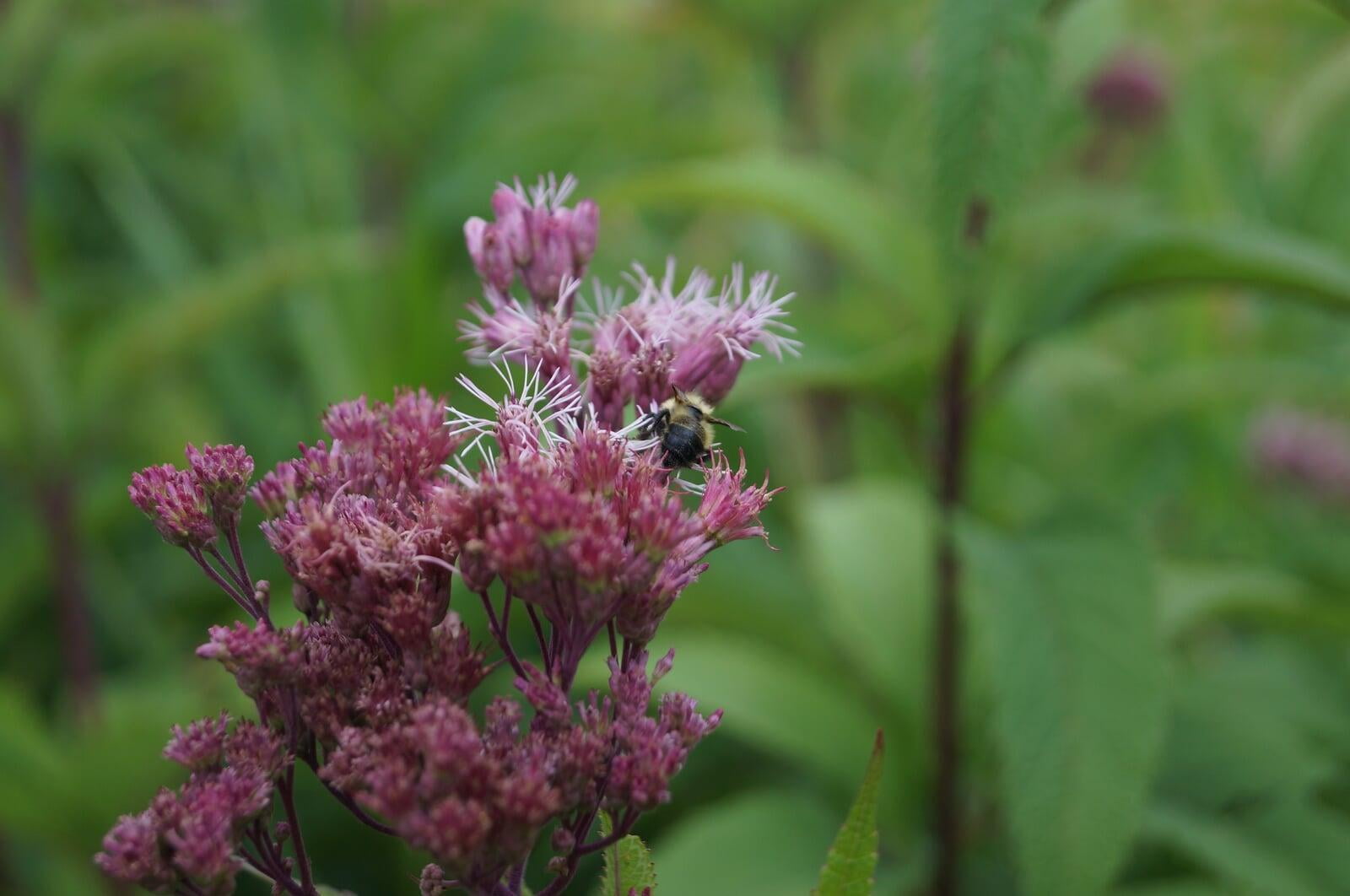Eutrochium maculatum
Joe-pye weed Description:
Eutrochium maculatum, commonly known as spotted Joe Pye weed, is a North American perennial plant that belongs to the Asteraceae family. It is a tall plant, growing up to 10 feet in height, with strong, sturdy stems that are covered in purple spots. The leaves are arranged in whorls along the stem, with each leaf being long and narrow.
In late summer and early fall, Eutrochium maculatum produces large clusters of pink or mauve flowers at the tops of the stems. The flowers are attractive to a variety of pollinators, including bees, butterflies, and hummingbirds, and provide an important source of nectar for them.
Spotted Joe Pye weed is a wetland plant that thrives in moist to wet soils, although it can also grow in drier conditions. It is commonly found in wetlands, meadows, and along stream banks throughout much of eastern North America.
In addition to its ecological benefits as a pollinator plant and its use in wetland restoration for water filtration, Eutrochium maculatum has a variety of traditional medicinal uses. The plant has been used by Indigenous peoples for its antipyretic (fever-reducing) properties, and in modern times it has been studied for its potential as a treatment for conditions such as rheumatism and urinary tract infections. It is also a popular ornamental plant in gardens, valued for its tall, showy flowers and ability to attract pollinators.
Native Range:
Joe-pye weed is quite common in the Upper Midwest and Northeastern United States. That said, it does have a native range from Washington state to Arizona and as far south along the Eastern United States as Georgia.
Standard Plant Information:
Plant Height: 2' - 10'
Bloom Time: July - September
Preferred Habitat: Does well in full sun with moist soil. Often found along shores.
Sowing:
For most homeowners, the best option is to scatter seed on the ground by hand broadcasting at a minimum of 16-64 pls ounces per acre. For even coverage, we recommend that you broadcast seed in perpendicular rows across the site to ensure even coverage.
You’ll want to broadcast any grass seed first, which will get raked into the soil lightly. Next, it is ideal to mulch the area lightly with either a clean (no seed) straw or preferably with our native Little Bluestem straw, sold at our retail garden centers. After a light mulching is complete, now it’s time to broadcast your native wildflower seeds, which should not be raked into the soil. A good rain or watering is sufficient to cover the seed.
Planting:
Simply dig a hole in the soil slightly larger than the plant’s roots. Ensure that the soil line of the plant is maintained during the transfer (i.e. the plant should be at the same level with the ground as it was in the pot). Pack any loose dirt back around the plant and make sure you water it well the same day to ensure it has the best chance of survival.









